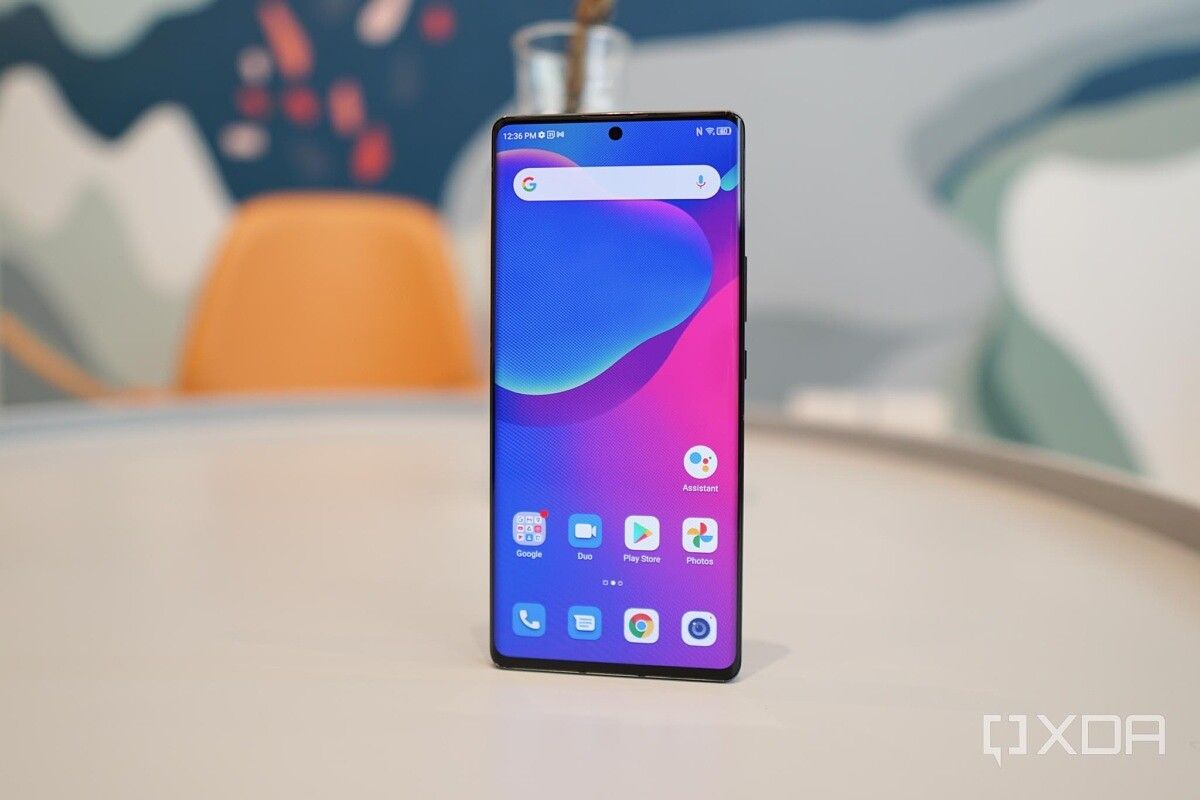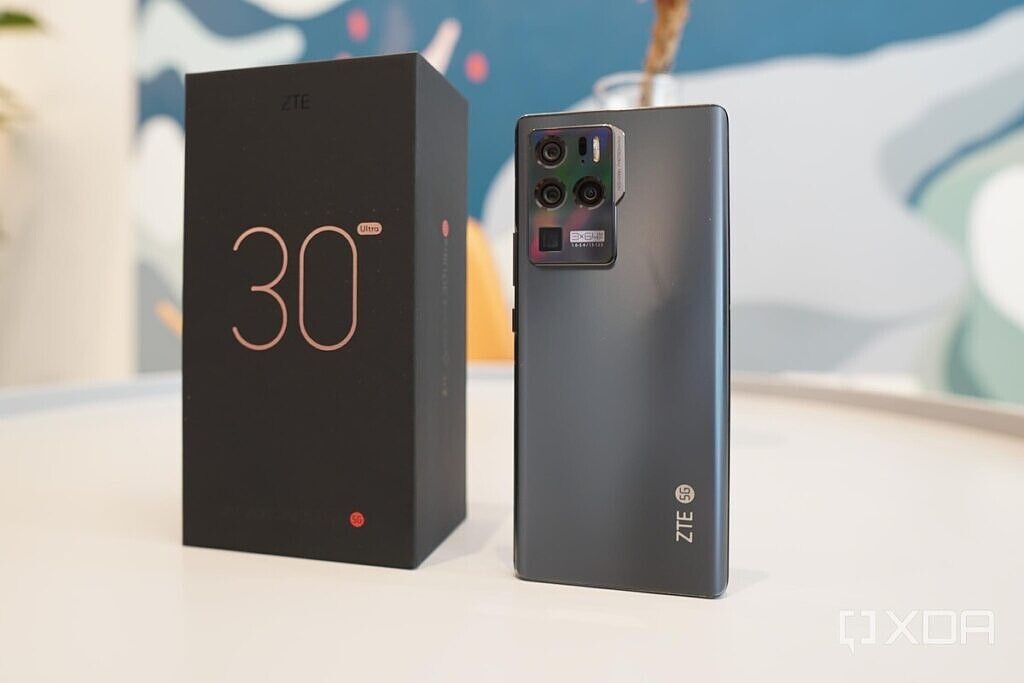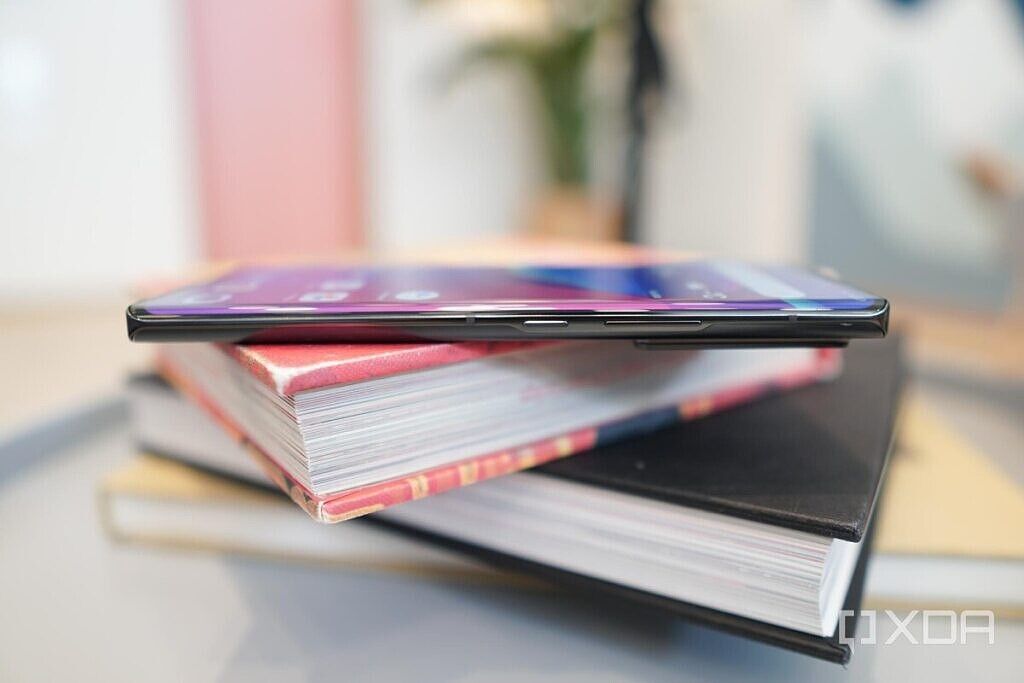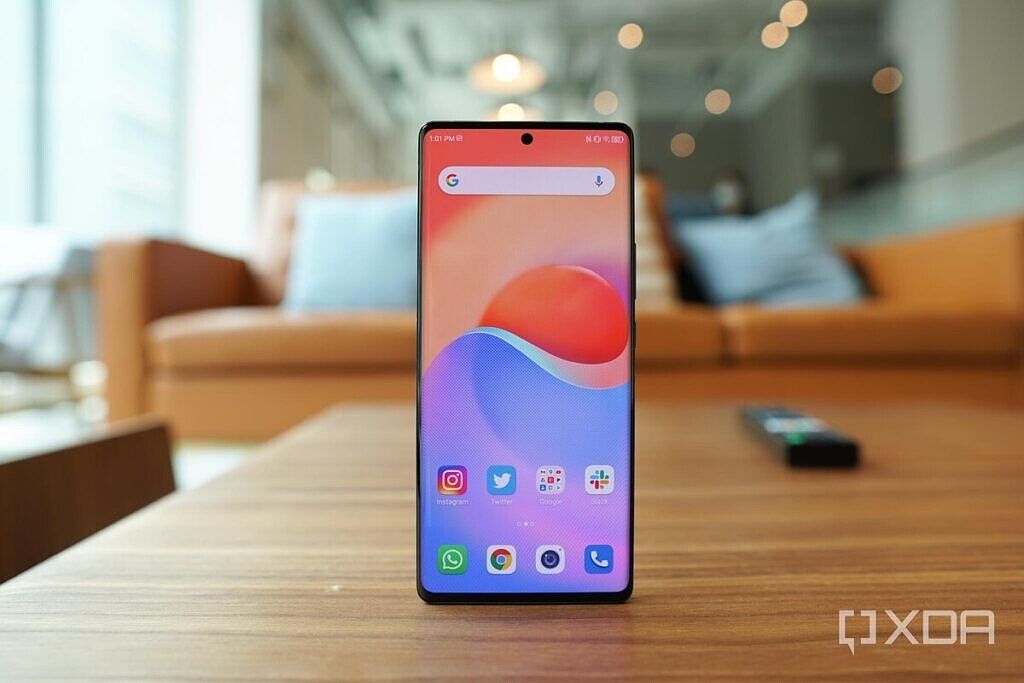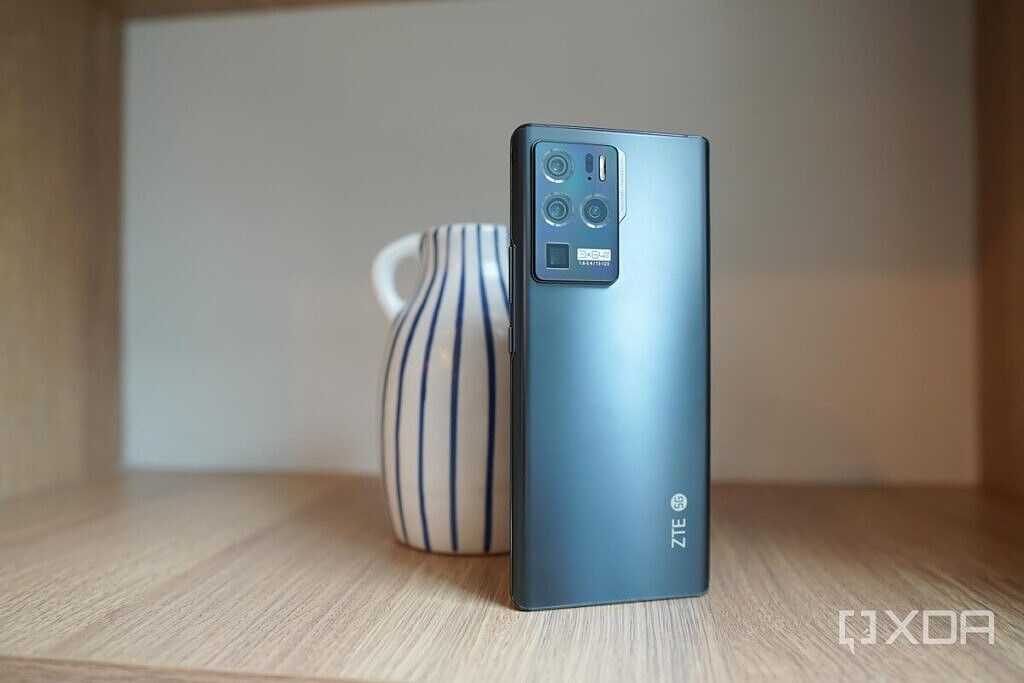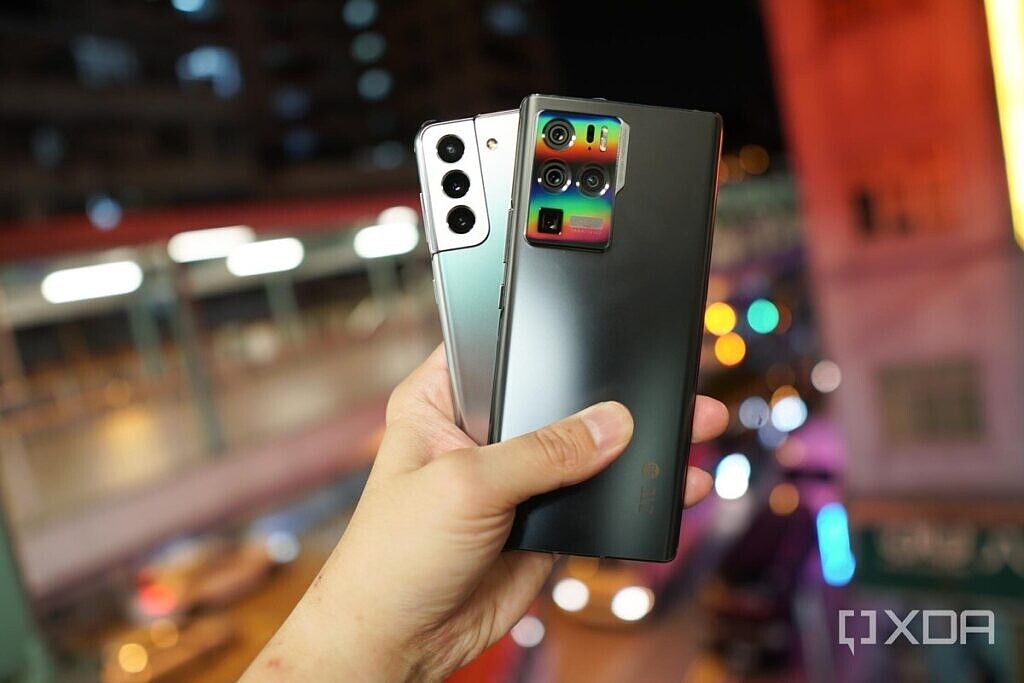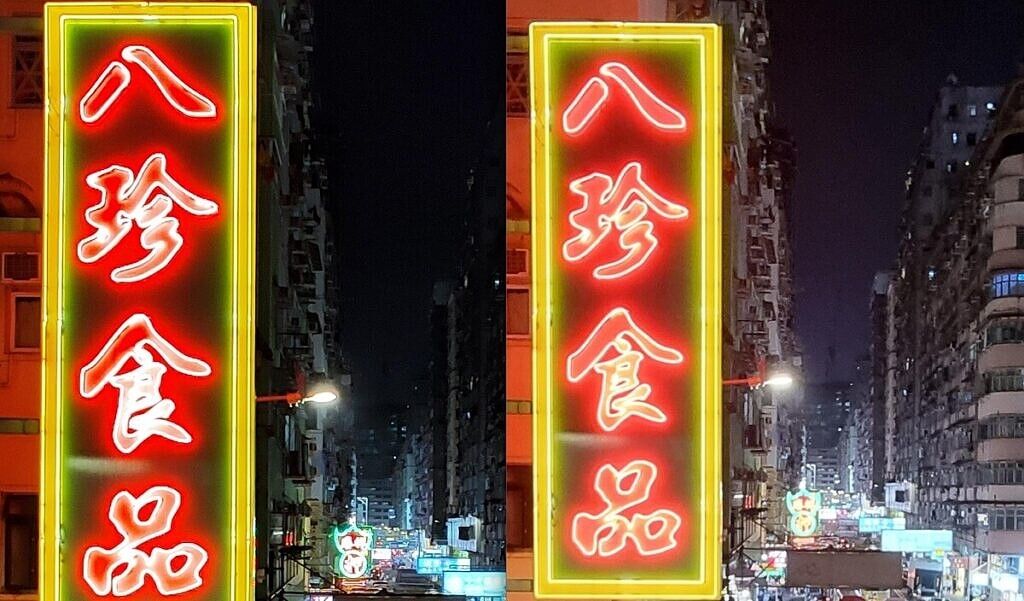After introducing the world's first under-display selfie camera that wasn't quite ready for prime time with last year's Axon 20, ZTE is back with the Axon 30 Ultra. Despite its "Ultra" moniker, the Axon 30 Ultra actually plays things a bit safer. Sure, there are some gaudy numbers that pop off the spec sheet, including a 144Hz OLED display and not one but three 64MP cameras, but this is still a more conventional glass-aluminum sandwich flagship. This phone seems specifically positioned against Samsung's Galaxy S21 Plus (but not Ultra). As such, we decided to include a brief comparison in our hands-on.
ZTE Axon 30 Ultra 5G: Specifications
|
Specification |
ZTE Axon 30 Ultra 5G |
|---|---|
|
Dimensions and Weight |
|
|
Display |
|
|
SoC |
|
|
RAM and Storage |
|
|
Battery & Charging |
|
|
Rear Camera |
|
|
Front Camera |
16MP |
|
Ports |
USB Type-C port |
|
Connectivity |
|
|
Other features |
|
|
Software |
Android 11 with ZTE My OS 11 |
About this hands-on: ZTE sent me a global version of the Axon 30 Ultra. ZTE had no input in this article.
ZTE Axon 30 Ultra: design and hardware
The ZTE Axon 30 is yet another curvy glass sandwich slab, but the curves here are unlike those found on recent flagships. While everyone from Samsung, OnePlus, and OPPO have toned down the curvature of their screens, ZTE has gone in the opposite direction: the Axon 30 Ultra's 6.7-inch 1080P OLED screen slopes dramatically. It's not a steep dropoff like Huawei's waterfall screens, but it's more akin to an older Samsung circa the Galaxy S7 Edge era. This results in sharper sides, which coupled with the flat top and bottom, make for an angular, masculine-looking device.
The phone feels premium in the hand, with a matte glass back and a camera module that reflects light in a rainbow gradient. At 188g and 8mm, it's thinner and lighter than Samsung and Xiaomi's Ultra phones.
The OLED screen looks great and can refresh up to 144Hz with a 300Hz touch sampling rate. There are options to lower the refresh rate to 120Hz, 90Hz, or 60Hz. I'm not much of a mobile gamer, so I likely won't take advantage of the 144Hz screen to its fullest potential, but animations looked very smooth to my eyes.
Inside the phone are the usual Android flagship guts: the Snapdragon 888 SoC paired with 8GB of RAM. There's a 4,600 mAh battery that can be charged at 66W speeds with the included charging brick.
ZTE Axon 30 Ultra: cameras
The unit I'm testing is a global version that will be sold unlocked in the US and Europe. Since the launch is still weeks away, the software on the device is not final — something to keep in mind when we check out photo samples soon.
The Axon 30 Ultra features a quad-camera main system, with the aforementioned triple 64MP sensors flanked by an 8MP 5x periscopic zoom lens. The trio of 64MP cameras — which ZTE dubs the "Trinity Camera System" — covers the usual wide, ultra-wide, and telephoto (2X optical, 35mm) focal range, and all three pixel-bin down to 16MP photos.
I stress again this is not a review but rather an early impression, but regardless, photos look really good in a vacuum.
The main camera produces a natural bokeh with a closer subject, and the ultra-wide lens doesn't exhibit distortion. Because it's technically got 64 million pixels worth of information (binned down to 16 million), the entire ultra-wide shot is crisp, even the sides, which tend to be soft in less pixel-dense sensors.
There is a bit of color inconsistency between the main and ultra-wide cameras (they use different sensors: Sony IMX686 and Samsung GW3, respectively), but again, this is not final software, so perhaps this will be fixed in the retail software. The differences aren't too bad anyway.
Since the ZTE Axon 30 Ultra will likely be priced below the $1,200 range of the Galaxy S21 Ultra, it seems the Galaxy S21 Plus is a better comparison for this hands-on, so I grabbed a few shots with both phones.
In standard night photos captured by the main cameras, both phones shot some great-looking images that are very close to call. I do prefer the S21 Plus' cooler color tones more, particularly in the second set of the busy street market.
However, in the below shot, the ZTE Axon 30 Ultra's shallower depth-of-field is a more aesthetically desirable shot in my opinion.
Moving to the ultra-wide lens, the ZTE Axon 30 Ultra's shots tend to be dimmer than Samsung's because it has far more pixels to fill (the Galaxy S21 Plus uses a 12MP ultra-wide sensor).
But if I zoom in and pixel-peep, the ZTE Axon 30 Ultra's shot is noticeably sharper and less noisy due to having more pixel information.
ZTE Axon 30 Ultra software
The Axon 30 Ultra runs Android 11 with ZTE's MyOS software on top. It's a colorful software that is distinctive visually from stock Android but comes with some nice additions: I like the larger toggle buttons in the notification shade; that I can thumb through an alphabetical column on the right side of the app drawer to quickly reach an app by alphabetical status; and the customizable Always-on display and shortcut gestures.
Other aspects of the software need more refinement, such as the heavy-handed "accidental palm touch prevention" option in settings that gives the option to make entire chunks of the screen lose touch sensitivity. Palm rejection should be done intelligently according to context by the software instead of a straightforward "make half an inch of the screen not functional."
Conclusion: The rare Chinese phone to sell stateside gives it a leg up
There are a lot of good Android flagships from Chinese tech brands such as the Xiaomi Mi 11 Ultra, OPPO Find X3 Pro, and the Vivo X60 Pro Plus. But the ZTE Axon 30 Ultra has something on all of those phones — it will be sold in the US. While it's not going to take a dent out of Apple or Samsung's pie, with LG shutting down its mobile business, there's room in the US phone scene for another brand to make an impression.

